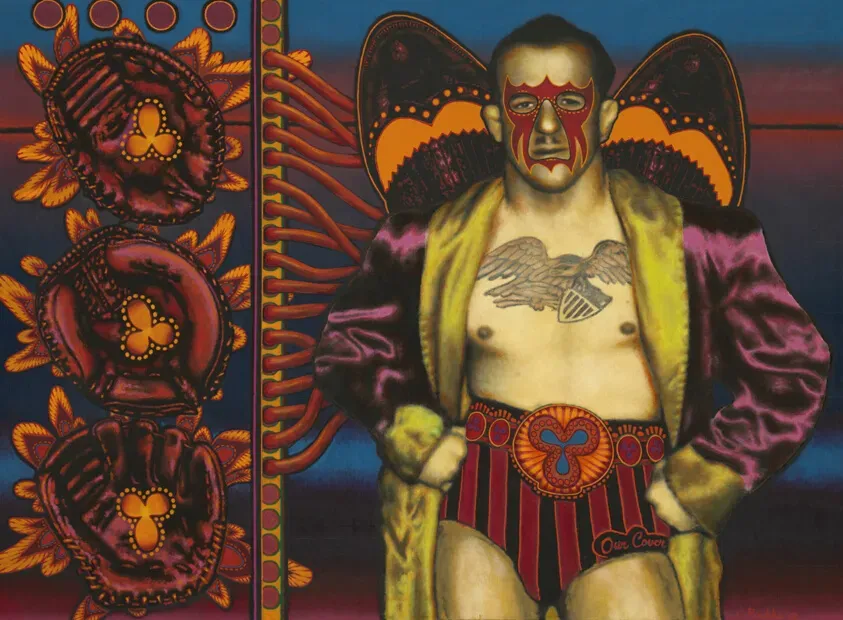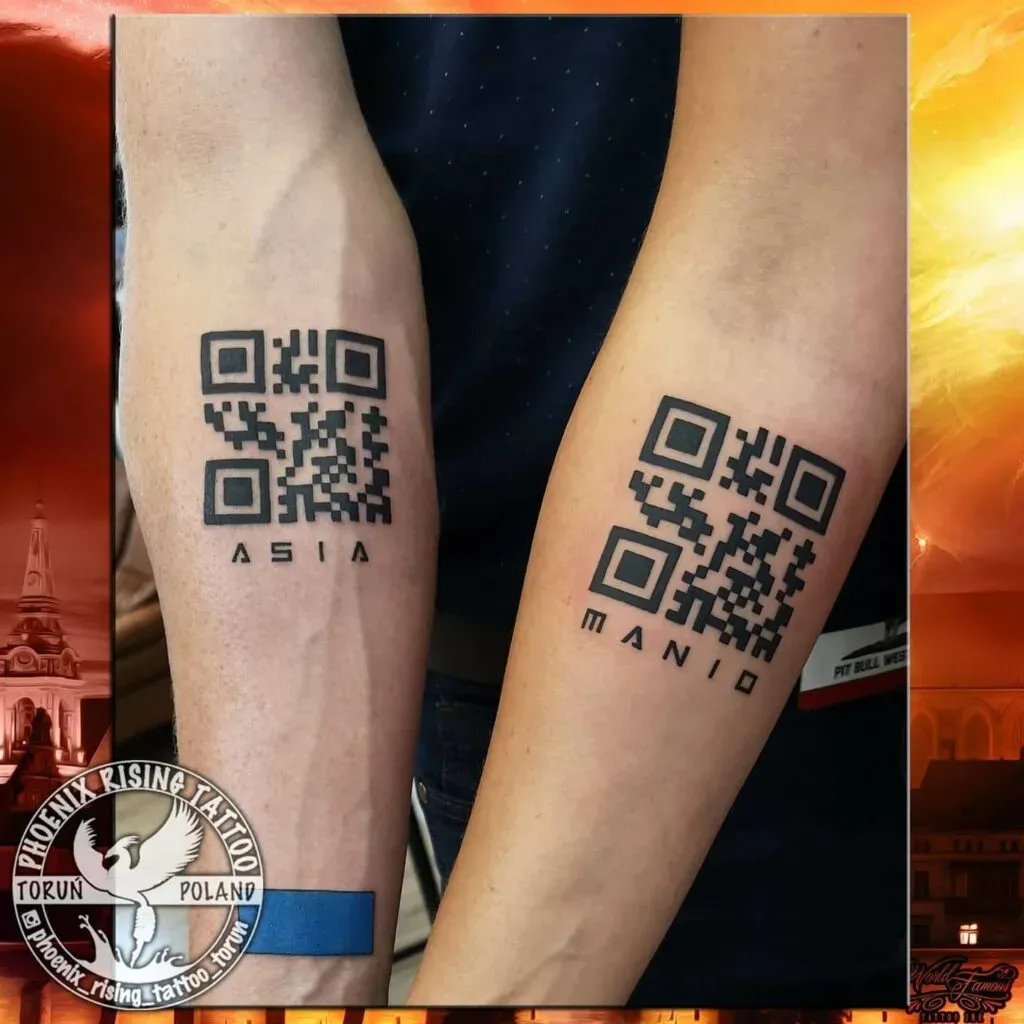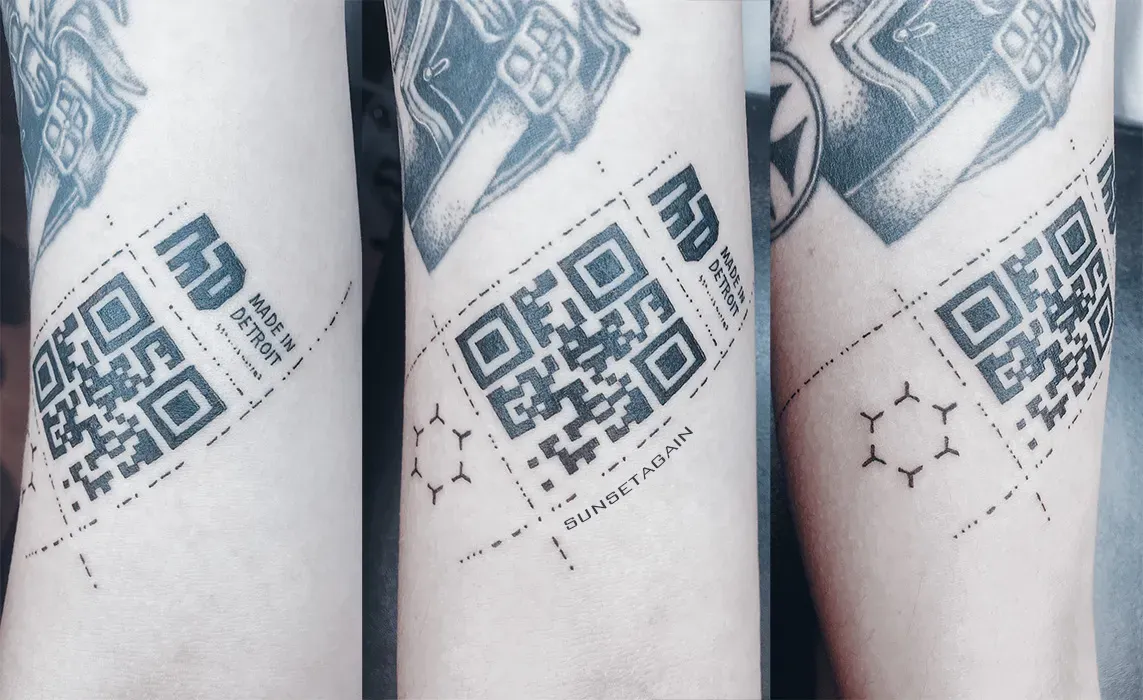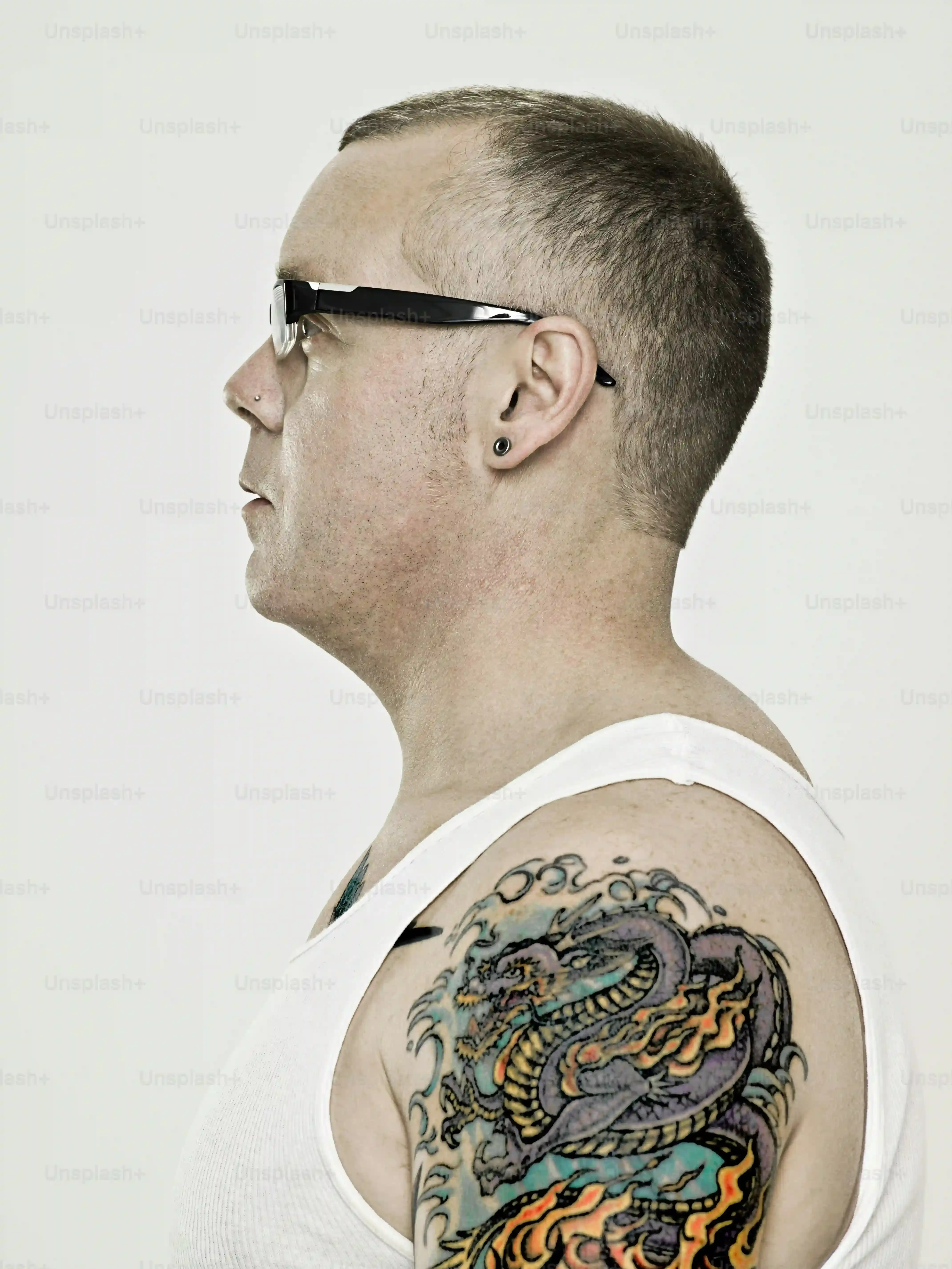Table of Contents
Thinking about getting a tattoo that's more than just ink? Maybe you've seen them online or heard chatter about people getting scannable art etched onto their skin. Welcome to the world of the tattoo design qr code. It’s a concept that sounds futuristic, maybe even a little wild, but it’s gaining traction.
What Exactly is a QR Code Tattoo?
What Exactly is a QR Code Tattoo?
More Than Just a Fancy Barcode
So, you're curious about a tattoo design qr code? Let's break it down. At its core, it's exactly what it sounds like: a tattoo of a Quick Response (QR) code. These aren't just random patterns; they're two-dimensional barcodes designed to be read by machines, typically smartphone cameras. Think of it as a digital portal etched onto your skin. When someone scans it, it can instantly take them somewhere online, display a block of text, share your contact info, or even show a picture or video. It’s taking something functional and making it permanent body art. It's not for the faint of heart or those who change their minds often, considering the information linked to it can change, but the code itself is fixed.
The Appeal of Scannable Skin
Why would someone get a scannable tattoo? The reasons vary, and frankly, some are probably just for the novelty. But for many, a tattoo design qr code offers a unique blend of the personal and the digital. It could be a memorial, linking to a photo album or video of a loved one. It might be for a musician, linking to their latest track on Spotify. Entrepreneurs might link it to their LinkedIn profile or website. It’s a conversation starter, sure, but it also has a potential utility that traditional tattoos lack. The idea is that your skin becomes an interactive canvas, capable of sharing information with a simple phone scan. Of course, the trick is making sure it *stays* scannable.
What can you even link a QR code tattoo to?
- A personal website or portfolio.
- Social media profiles (Instagram, TikTok, etc.).
- Contact information (digital business card).
- A specific song or playlist.
- A photo gallery or video memorial.
- Cryptocurrency wallet address (yes, really).
- A simple text message or quote.
Designing Your Perfect Tattoo Design QR Code
Designing Your Perfect Tattoo Design QR Code
Picking What Goes Inside Your Code
Alright, so you're sold on the idea of a tattoo design qr code. Cool. The very first step, before you even think about ink, is figuring out what digital payload this thing will carry. This isn't a spontaneous decision; it's the core function of your future tattoo. You need to decide exactly what link, text, or contact info you want embedded. Is it your artist portfolio site? A charity you support? A memorial video for your grandma? Be specific. Once you know the destination, you'll head to a QR code generator online. There are tons of free ones out there, but for something permanent on your skin, consider a reputable one, maybe even a paid dynamic code service if you plan on changing the linked content later (more on that potential headache in a bit). Generate the standard black and white square first. This is your blueprint.
Making It Look Good (and Scannable)
Now comes the fun part, and the tricky part, of the tattoo design qr code: making it aesthetically pleasing while keeping it functional. A standard QR code is, let's face it, pretty bland. Just a bunch of squares. Many generators allow for customization – changing colors, adding logos in the center, rounding the corners of the pixels. You can get creative, but here's the crucial caveat: every change you make *increases* the risk of the code not scanning. The simpler the design, the more robust it is. Think about it – a tattoo fades, skin wrinkles, lines blur slightly. A complex, highly customized code is far less forgiving of these real-world changes than a basic one. You're balancing art with technology, and technology on skin is inherently unstable long-term. Test your customized code relentlessly on different phones, in different lighting conditions, before you even show it to a tattoo artist.
What makes a QR code design more likely to scan?
- High contrast between the code color and background color (black on white is ideal).
- Clear, sharp edges on the pixels.
- Sufficient quiet zone (empty space) around the code perimeter.
- Minimal customization that affects the core pattern, especially the 'eyes' in the corners.
- A static code is generally more reliable than a dynamic one for permanence, though less flexible.
Finding the Right Artist for Your Tattoo Design QR Code
Finding the Right Artist for Your Tattoo Design QR Code
Why This Isn't Your Grandpa's Tattoo
you've got your tattoo design qr code file ready. You know what you want it to link to. Now for the really critical step: finding someone who can actually put this precise, scannable pattern onto your squishy, ever-changing skin. This isn't the same as finding an artist who does killer portraits or traditional Japanese sleeves. A QR code is essentially geometric line work, but with zero room for error. We're talking about tiny squares that need to be perfectly defined, perfectly spaced, and consistently inked. A blown-out line, a slightly wobbly square, or inconsistent ink depth can render your high-tech body art completely useless. You need an artist who treats precision like a religion, someone who understands that milliseconds of scanner time depend on their steady hand and attention to detail.
Hunting for the Precision Master
So, how do you spot this unicorn of a tattoo artist? Start by looking at portfolios, but don't just glance at the pretty pictures. Specifically, search for artists who showcase clean, intricate geometric work, dot work, or fine line tattoos. These styles demand the kind of precision necessary for a functional tattoo design qr code. Look at how sharp their lines are, how consistent their shading (or lack thereof) is, and whether their patterns look crisp even up close. Don't be afraid to ask them directly if they have experience with QR codes or similar highly technical, geometric designs. If they look at you like you've grown a second head, or dismiss the complexity, walk away. This is not the gig for a freehand specialist who prefers organic shapes.
What should you ask a potential artist?
- Have you ever tattooed a QR code or similar geometric pattern requiring extreme precision?
- Can I see examples of your fine line or geometric work?
- How do you account for potential ink spread or fading with such small, detailed elements?
- What is your process for ensuring the pattern is transferred accurately and stays true during the tattoo?
- What size do you recommend for the QR code to maximize scannability?
The Consultation is Non-Negotiable
Once you've narrowed down your list, book consultations. Bring your digital QR code file and any custom designs you've worked on. A good artist will want to see the actual code you plan to use. They should discuss placement options with you, considering areas less prone to stretching, wrinkling, or excessive sun exposure – because skin distortion is the enemy of scannability. They should talk about sizing; too small and it won't scan, too large and minor imperfections become glaringly obvious. Pay attention to their confidence level, but also their honesty. If they seem overly enthusiastic without acknowledging the potential challenges, that's a red flag. You want someone who respects the technical difficulty of a tattoo design qr code and has a clear plan for executing it flawlessly.
Keeping Your QR Code Tattoo Scannable: Realities and Maintenance
Keeping Your QR Code Tattoo Scannable: Realities and Maintenance
The Harsh Truth: Skin Isn't a Printer
let's get real about your tattoo design qr code. You've gone through the pain, paid a chunk of cash, and hopefully, your artist nailed the precision. But here's the inconvenient truth: skin ages. It stretches, it wrinkles, it fades in the sun, and ink particles migrate over time. That perfectly crisp pattern your artist laid down? It's going to soften, blur, and potentially distort. This isn't a printout on glossy paper; it's a living, changing canvas. What scanned perfectly the day you got it might be a blurry mess five, ten, or twenty years down the line. Factors like placement (areas that move a lot like elbows or knees are riskier), sun exposure, and even just your body's natural aging process play a huge role. Expecting it to scan flawlessly forever is setting yourself up for disappointment.
What Happens When It Stops Scanning?
So, your once-proud tattoo design qr code is now just cool-looking geometric art that your phone refuses to acknowledge. Don't panic immediately, but understand this is a likely outcome eventually. Your first step is to try scanning with different apps and different phones; sometimes the scanner itself is the issue. If that fails, examine the tattoo closely. Has it faded significantly? Are the lines blurring together? Is the skin around it wrinkled or distorted? If the core pattern is compromised, you have limited options. You could try a touch-up, but this is incredibly difficult with QR codes – adding more ink can just make the blur worse. A skilled artist might be able to sharpen lines, but it's a delicate operation. In many cases, once the precision is gone, the scannability is gone for good. That high-tech portal becomes a static piece of history.
How can you try to extend your QR code tattoo's scannability?
- Apply high SPF sunscreen religiously, especially on the tattoo area.
- Keep your skin moisturized; dry skin can make tattoos look dull and lines less defined.
- Avoid significant weight fluctuations or muscle gain/loss that could stretch the skin where the tattoo is placed.
- Get touch-ups *only* from an artist experienced with this type of precision work, and understand the risks.
- Keep the original digital file of the QR code handy for comparison if needed.
The End of the Line? Not Quite.
So, you've weighed the cool factor against the cold, hard realities of a tattoo design qr code. It's a bold statement, no doubt, a digital doorway etched into your skin. But remember, ink fades, skin wrinkles, and technology marches on. While a well-executed QR code tattoo *can* work, its lifespan as a reliable scanner is a gamble, dependent on the artist's skill, your skin's behavior, and diligent aftercare. It's not a fire-and-forget piece; it's a commitment to potential touch-ups and the acceptance that someday, it might just be a cool pattern that used to do something. Choose wisely, plan meticulously, and maybe have a backup plan for whatever digital link you're embedding.